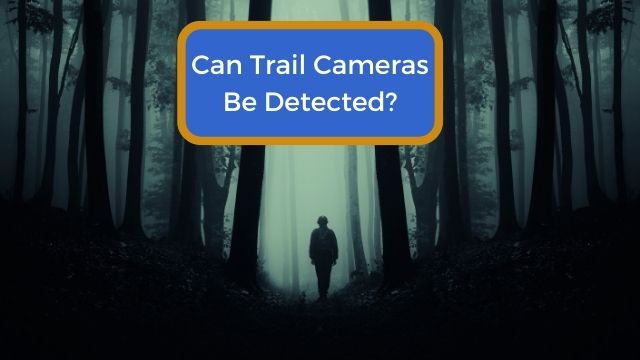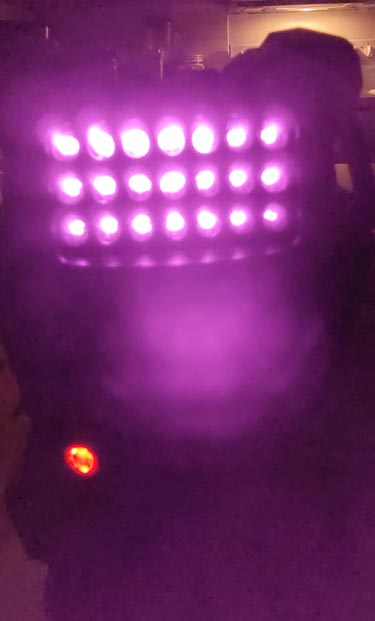
Have you ever wondered how to detect trail cameras or if they can even be detected at all? It’s a question that’s crossed many minds, especially if you’re a hunter, property owner, wildlife enthusiast, or someone just curious about the devices around you.
So can trail cameras be detected and are there some tools or devices that can help a person find them? Though they’re designed to blend in with their environment, yes, trail cameras can be detected, and depending on their features, there are things you can do and things you can use to help you find them no matter how well hidden or camouflaged they are.
In this article, we’ll delve into the techniques and tools you can employ to find a hidden trail camera. From the practical tips to the high-tech devices, you’ll discover a range of methods to help you learn how you can beat the camouflage and uncover those elusive trail cameras.
So let’s start going over the different methods you can use to detect trail cameras.
Table of Contents
Visual Inspection
Visual cues can often give away the presence of a trail camera. These cues may include spotting an antenna, identifying a power cord, or catching a reflection from a camera lens. In addition to looking for the visual signs we just listed, you can read our article about how to find trail cameras where we list many more things to watch out for.
Knowing what to look for has helped me find trail cameras in all kinds of unexpected places and is how I usually locate cameras. However, not all trail cameras will be easily noticeable. Sometimes, they’re cleverly hidden behind foliage or camouflaged to blend in with the environment, which is why using some tools or electronic devices can often be helpful.
Thermal Imaging Camera
One thing you can use to help you in your search is a thermal imaging camera. A thermal imaging camera, or infrared camera, works by picking up heat differentials between objects and displaying that information as a visible image on its screen. Thermal imaging cameras help you to see objects in low light conditions as well as allow you to see through or behind heat-permeable barriers
While these cameras can identify heat differentials which could help spot a trail camera, they aren’t foolproof. Here’s the catch – trail cameras don’t generate as much heat as many other manmade devices, making them harder to detect. Furthermore, the environmental conditions where you are searching can hamper the effectiveness of a thermal imaging camera.
So, before you shell out your hard-earned money on one of these pricey cameras, you might want to consider some other less expensive options first.
Portable Hidden Camera Detector
Though thermal imaging cameras offer a great solution, they may not fit everyone’s budget. Fear not, as there is a more cost-effective solution that you can easily access. So, let’s delve into the world of portable hidden camera detectors.
These compact devices are not just budget-friendly but highly efficient too! Here’s how they work: they use a technology that detects radio frequency (RF) transmissions, which would include Bluetooth, WiFi and cellular signals. By simply scanning the surroundings, these detectors can pick up on the signals that hidden cameras may be emitting. However, not all trail cameras have wireless or cellular capabilities, which is why these detectors will help you look for more than RF signals.
Did you know most of these devices are also capable of detecting infrared light? Infrared light is what most trail cameras use to illuminate the area they are monitoring at night.
A large number of hidden camera detectors will also come with lights to help you quickly identify any camera lenses that may be hidden in the area.
Smartphone Camera
While portable hidden camera detectors are handy, let’s look at a tool you probably already have at your fingertips – your smartphone camera. It’s not only a convenient option, but also a cost-effective one, assuming that you or someone you are searching with has a smartphone.
Unless a trail camera is set up out in the open with no camouflage, trying to detect a trail camera at night with a flashlight can be very difficult. Your best bet is to try to look for the camera’s flash when it takes a picture or captures a video and that is where the camera on your smartphone comes in to help.
While only a small number of trail cameras utilize a white flash to capture nighttime images, which can inadvertently reveal their location at night, the majority of contemporary models opt for a low glow or no glow infrared flash. This infrared flash emits light that falls outside the human eye’s perceptible range. The good news is that many smartphone cameras can actually pick up this infrared light emission when the flash is active, aiding you in pinpointing the camera’s placement.
We proved how effective the camera on a smartphone can be at detecting the infrared flash from trail cameras in our article where we answered the question, “Do trail cameras work from behind a glass window?”
The key to using your smartphone camera is to make sure that you are within the camera’s detection range so the camera is triggered to take a picture or record a video and to have your smartphone camera ready at all times.
Smartphone Bluetooth and WiFi Capabilities
In today’s era of connectivity, many trail cameras come with Bluetooth and WiFi capabilities. This allows users to connect their smartphones to the camera, making it easier to control and access the photos or videos taken. However, you can use these features to your advantage to detect the presence of trail cameras in the woods by having your smartphone scan for available Bluetooth or WiFi signals to see what devices are nearby.
Creating WiFi signals for users to connect to takes more energy from the camera’s batteries than a Bluetooth signal. That is why most trail cameras with WiFi need to have it turned on by connecting to the camera through its Bluetooth signal, which is always on. That is why despite the shorter range of Bluetooth compared to WiFi it may be most effective to have your camera search for Bluetooth signals instead.
The strength of using this method of detecting trail cameras is that you can do it both day and night and it works even if the camera is posted in an elevated location, and if you find a signal to connect to you know you are in the right area.
Conversely, the weakness of searching for WiFi or Bluetooth signals to locate a trail camera is that these signals have limited range and depending on the terrain and vegetation can significantly interfere with Bluetooth and WiFi signals, reducing their effective range and detection accuracy. The other thing to keep in mind is that many trail cameras don’t use Bluetooth or WiFi and therefore will be undetectable using this method.
Smartphone Apps to Detect Hidden Cameras
Sticking with the ways in which our smartphones might be able to help us, let’s talk about hidden camera detection apps. Yes, you heard it right. Your smartphone isn’t just a communication device; it’s also a potential hidden camera detector.
Hidden camera detection apps are another tool that people are using to detect surveillance devices, including trail cameras. These apps typically work by scanning for camera lenses or for the infrared light that many cameras emit to illuminate photos and videos at night.
Widely available in the Google Play Store and App Store, and many of these apps can be downloaded for free or at a very low cost.
After reading this you might be wondering if you should just stick with using your smartphone’s camera when searching for a trail camera. While using your smartphone’s camera can work, using a hidden camera detection app can be more effective for a few reasons:
- These apps are specifically designed to detect cameras and often use sophisticated algorithms to differentiate between camera lenses or infrared lights and other reflective objects. This can result in more accurate detection.
- Most apps come with an alert system that notifies you when a camera is detected. This can be helpful when searching for longer periods of time or when you don’t feel confident to know what you are looking for.
- You can use these apps both day and night, whereas using your smartphone to detect IR flash from trail cameras is something that you can only do in low-light situations.
It is also fair to point out that these apps aren’t perfect and that some people will report mixed results or frustrations when using them for a variety of reasons. One reason for frustration is that these apps can sometimes give false positives, detecting reflections or other sources of light and identifying it as a camera. Another potential problem is when a trail camera is well-hidden, camouflaged, or simply too far away, it might be difficult for the app to detect it. The last thing that might reduce an app’s effectiveness is the time of day you are using it as trail cameras don’t emit infrared light during the day.
Final Thoughts
In conclusion, it’s imperative to stay vigilant and use the right approach to detect hidden trail cameras. While using the proper techniques to conduct a thorough visual inspection often leads to good results and utilizing thermal imaging cameras can be beneficial. Additionally, portable hidden camera detectors can be quite effective.
Moreover, don’t underestimate the power of your smartphone. With its camera, Bluetooth, and WiFi capabilities, you can identify hidden cameras. There are also specific apps designed for this purpose. Each tool has its strength, so make use of them wisely as you set out to detect trail cameras in your area.






